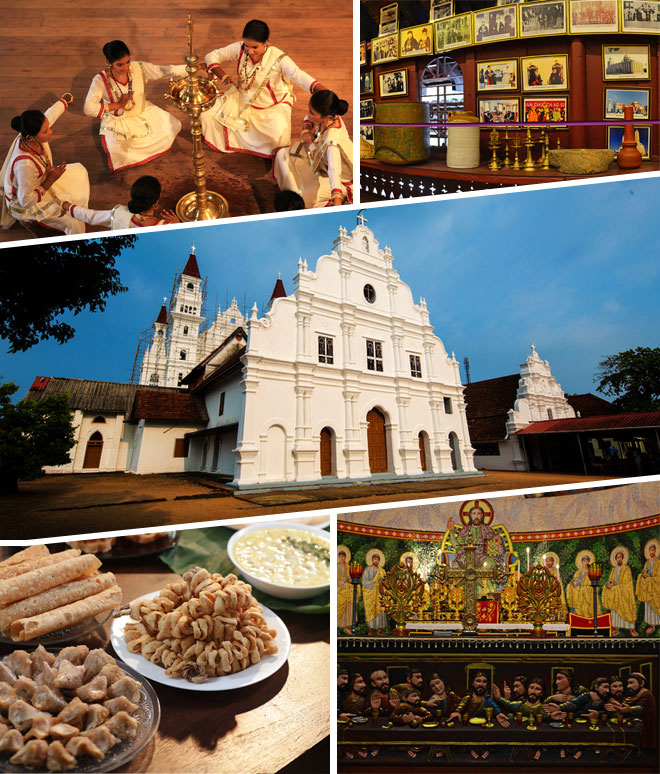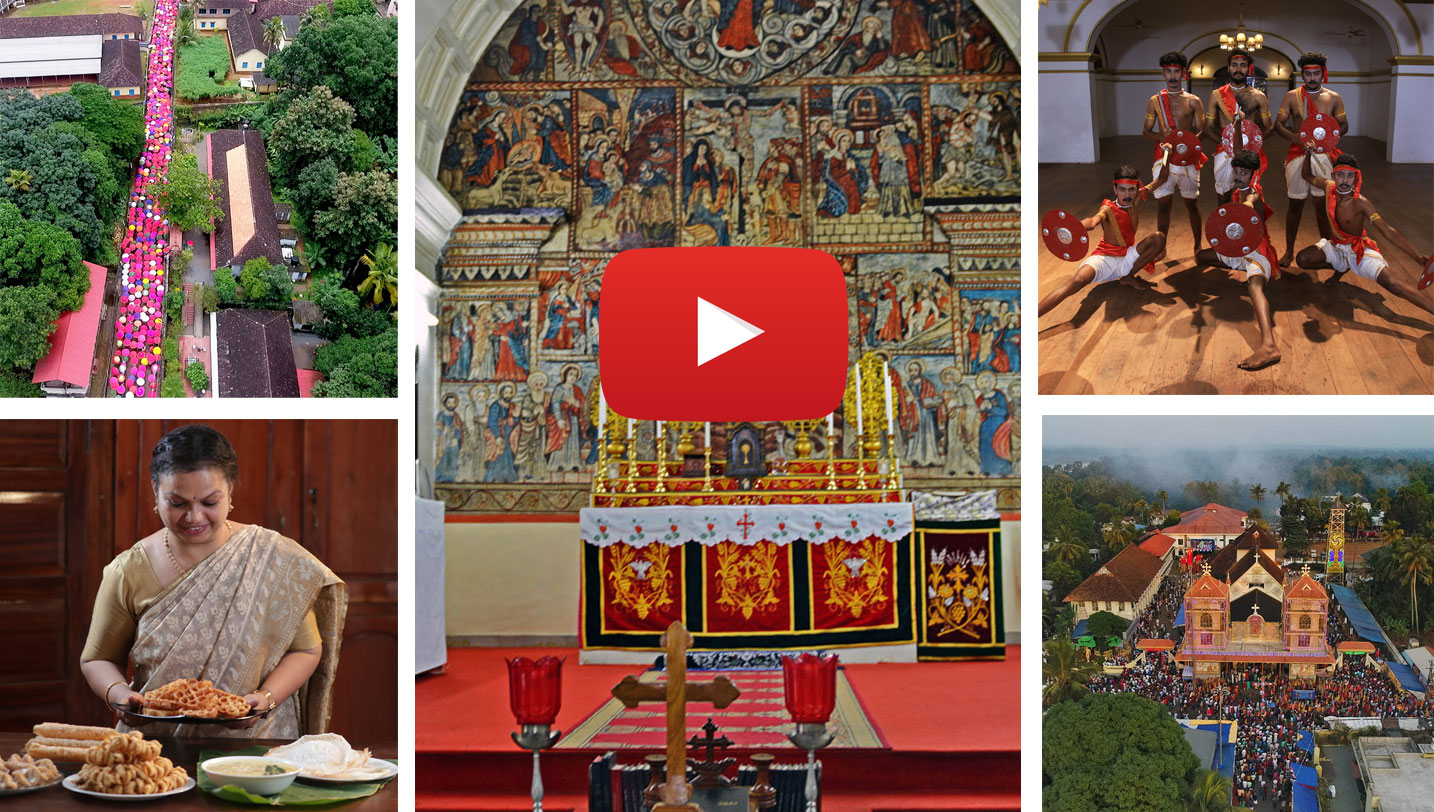Christian Museums

Indo-Portuguese Museum, Fort Kochi
This museum set by Bishop Kureethara has a lot of traditional exhibits. It had the assistance of the Portuguese. The museum has exhibits that portray the influence of Portuguese colonisation since the 16thcentury and their evangelisation. This includes a huge collection of thaliyolas, idols, letters from Rome etc. The exhibits have been classified as Altar, Treasure, Procession, Civil Life and Cathedral. Among them, an Altar of Our Lady of Hope Church, Vypin, made in the 16th century, has been retained as such. Crosses in brass and wood, vestments, stone wicks, Remesenthis, crowns, sceptres of Bishops, Arulikkas, carved pictures and other exhibits are also there at the museum.
St. Thomas Christian Museum, Kakkanad
This museum which was founded at the headquarters of the Ernakulam- Angamaly Arch Diocese has a collection of traditional exhibits. This was set up by Cardinal Varkey Vithayathil. A 24-feet tall stone cross stands in front. Thirattus, rare books, vestments, baptismal fonts, old coins, stamps and 800 crosses from various churches are kept here. A vehicle once used at the Bishop’s House is kept here. Most notable among the exhibits is the manuscript of the Varthamana Pusthakam of 1785.
_large.jpg)
St. Thomas Museum, Palayoor
This museum on Indian history and Christianity has pictures of St. Thomas converting Indians into Christianity. The exhibits at Lourdes Church, Thrissur, were shifted to the museum in 1988. There are exhibits made of wood, ivory and granite. It has a rich collection of idols. The church had murals, inscriptions on its roof and on the Thora too. The Sanctuary made of wood is very beautiful. Biblical themes are inscribed on it.
St .Xavier Museum, Sambaloor, Ambazhakkad
It was San Paul Ur that in due course became Sambaloor. This was the main centre of activity of Jesuit missionaries. Arnos Pathiri, John Britto and Constantine Buski, also stayed at the St. Paul Seminary here. St. Paul Press was set up at that time. Many Malayalam and Tamil books were printed here during the 18th century. It was Tippu Sultan’s army that destroyed the church here and it was subsequently rebuilt by the Varapuzha Arch Diocese in 1862. This was again renovated in 1979 and in 2015 a new church came up in its vicinity.
The museum and its site are located amidst the remnants of the seminary press and church. The exhibits comprise of pieces of pottery, wood and metal crosses, idols, brass lamps and stone lamp wicks and metal crosses of the 15th century. The wedding costumes of the Anglo Indian community and their ornaments, (Cothinga, Arulikka Mala, Pinnu Mala, etc) are among the exhibits. Sambaloor is one of the places where the Anglo Indians had migrated to. Those laid to rest at the burial ground have Portuguese family names.
_large.jpg)
St. Kuriakose Elias Chavara Museum
The body of St. Kuriakose who died in 1871 was laid to rest at St. Philomina’s Church, Kunammavu. The room where he stayed, his cot, chairs and such others have been conserved. The press installed by him is exhibited in the Museum. Manuscripts of his books are also exhibited. The paintings of Martha Mariam and Infant Jesus and Yohannan drawn by Raja Ravi Varma are kept here.
St. John’s Nepumsian Church Museum
This museum recently opened at the Parappukara church has a lot of exhibits. Silver crosses, offering boxes, utensils used in the church, lamps, granite lamp stands, imported vessels, brass lamp, Thookku Kattikal, big Nannangadis, containers for lime and Karappu, and account and attendance books from the 19th century are there among the exhibits. Thirattus and the agreement given for starting kuries give an idea about the households and social situation those days. All these were in vogue in the early 19th century.
Holy Cross Museum, Arthattu
Though the museum was started only in 2016, it has a rich collection of exhibits. The church, to which the museum is attached, is a model for conserving things that are part of the tradition. Old books, stone wicks, idols, earthen pots, rare photographs, oil lamps, Karappu, old clocks, thaliyolas etc. form part of the collection. Now Fr. Louis Edakalathur, who is the Vicar, is planning to expand the museum.
Archdiocesan Archives, Major Arch Bishop’s House, Ernakulam
Traditional items are exhibited in two sections here. The museum has a large collection of thaliyolas and manuscripts. Notable among them is the Syriac book Namo Canon (1570). The thaliyolas have been micro-filmed and conserved. Thirattus, letters, and Sala Gramams are also there. Idols of the 15th century, stone crosses and pictures are there. The museum was set up as a result of the untiring efforts of Rev. Dr. Ignatius Payyapally.

